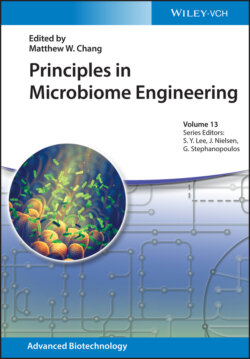Читать книгу Principles in Microbiome Engineering - Группа авторов - Страница 14
1.1.1.1 Oral Microbiome
ОглавлениеThe oral microbiome consists of diverse microbial populations that are categorized into individual niches based on localization preferences. These microbial niches vary regionally from the hard surfaces (teeth, dental prosthetics, and dental appliances) to mucosal surfaces (oral palate, cheek tissues, gingiva, tongue, and palatine tonsils). This variation is due to the accessibility of the microbes to nutrients and specific microenvironment changes generated by the brief passage time of food in the mouth. Currently, Human Oral Microbiome Database (HOMD) includes over 700 species of bacteria, where 57% are named, 43% are unnamed (13% are cultivated and 30% are uncultivated phylotypes) [7]. Through 16S rRNA gene sequencing, the HOMD established over 1000 taxa, where approximately 600 taxa are named and distributed in 13 different phyla, including Actinobacteria, Bacteroidetes, Chlamydiae, Chloroflexi, Euryarchaeota, Firmicutes, Fusobacteria, Proteobacteria, Spirochaetes, SR1, Synergistetes, Tenericutes, and TM1 [7] (Figure 1.1). These collective populations of microbes exert important host dietary functions involved in the metabolic, physiological, and immunological aspects. These include oral cavity health and also the perception of taste and smell [13].
Figure 1.1 The average adult human microbiota composition of five body sites and their dominant phyla. Oral microbiome mainly comprise Firmicutes (36%), Actinomycetes (25%), and Proteobacteria (22%) [8]; respiratory system microbiome mainly comprise Firmicutes (39.4%) and Bacteroidetes (23.5%) [9]; gut microbiome is dominated by Firmicutes (53.9%) and Bacteroidetes (35.4%) [10]; skin microbiome is dominated by Actinomycetes (51.8%) [11]; and urogenital tract microbiome is dominated by Firmicutes (61.9%) [12].
Source: Based on Zaura et al. [8], Moffatt et al. [9], Goodrich et al. [10], Grice et al. [11], and Hilt et al. [12].
The oral microbiota plays an important role during the initial development phase (3–14 months of age) and the transitional phase (15–30 months of age) in human infancy. This is due to the under‐developed gastric function that in turn results in the presence of microbes found in the daily encounter to be present in the stool samples of infants from the age of 3–30 months. Two continuous studies were conducted to link the role of gut microbiome progression and young age diabetes under the program called The Environmental Determinants of Diabetes in the Young (TEDDY) [14, 15]. In these studies, it was found that microbes found influenced by geographical factors, such as exposure to siblings, household pets, and day‐care exposures, were found in the infant's microbiome. Additionally, microbes isolates found in breast milk and baby food were found to be present in the infant fecal excretions [14, 15]. Furthermore, parents and guardians chew soft food prior to feeding the chewed foods to infants in certain cultures, effectively transferring the oral microbiome from the parents/guardians to the infant [16]. While the terminology diet often refers to the role of food and beverages proffered to the individual, it further includes the microbes that are in contact with the oral region, such as aerosol dense microbes and microbes existing on the surfaces of daily‐used items.
Thus, it is evident that the human oral microbiome plays an important role in shaping the initial gut microbiome, laying the foundation of the general microbiota composition upon entering the stable phase after the individual reaches over three years of age.
